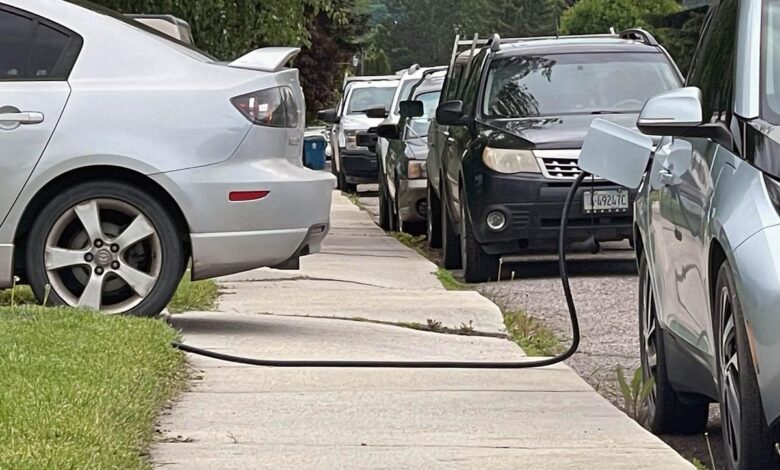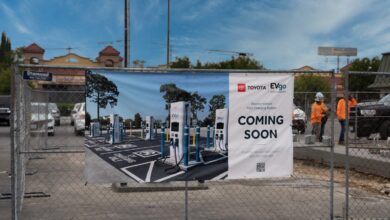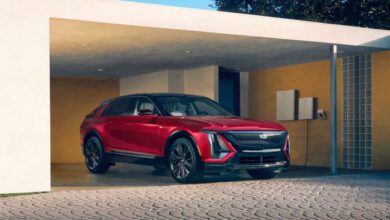As Missoula look to EV adoption, charging access will be key

Martin Kidston
(Missoula Current) As the year marches on, the City of Missoula will sharpen its Electric Vehicle Infrastructure Plan, which could find its way into code reform and how the city prepares for changes in transportation and technology.
While electric vehicles still represent a minority of cars on the road, their numbers doubled in Montana between 2021 and 2022, with more than 615 EVs now registered in Missoula County. It’s one of the highest adoption rates in the state, but the infrastructure for wider use is still lacking.
“I’m hoping what this Electric Vehicle Infrastructure Plan can do is take a look at those local processes and incentives to figure out ways to support people who want to make this adoption to EVs,” said Devin Filicicchia, the city’s electrification specialist. “Chargers are key methods to support electric vehicle adoption.”
The issue is now before the Transportation Policy Coordinating Committee and the Metropolitan Planning Organization, which is partially comprised of city and county officials, including Missoula County commissioners, the mayor and City Council.
At a recent meeting, city and county leaders explored ways to expand charging opportunities to expedite EV adoption. While nothing is set in stone, the Electric Vehicle Infrastructure Plan is slated for adoption later this year. Enabling those who don’t have access to off-street parking to charge an EV is likely to be a key piece of the plan.
Among the possibilities, Filicicchia said the city will explore ways to provide access to outlets across sidewalks. It could also see charging outlets placed on city-owned lamp posts, or allowing charging across the right-of-way in general.
“The city owns a good bit of lamp post. On city owned infrastructure, that’s certainly a possibility,” said Filicicchia. “There are ways to provide charging infrastructure in the most affordable ways possible to really leverage those existing street-furniture pieces. If they provide charging infrastructure, they wouldn’t be displacing anything.”
But those left to park on the street may need to drape a cord across the sidewalk to access a plug. The thought doesn’t please city officials, given the potential trip hazard and other issues.
But Filicicchia said there may be solutions that achieve the same outcome.
“One of the challenges is running a cord across the sidewalk so that it’s done in an ADA compliant manner,” said Filicicchia. “Visually, it’s not the best solution. This is really a steppingstone to better community infrastructure that supports this holistically.”
Eyes on adoption, carbon reduction
With goals of 100% clean electricity and steep cuts in carbon emissions, both the city and county are eager to facilitate the wider adoption of electric vehicles.
In Montana, driving an electric vehicle reduces Co2 pollution by 65% based upon today’s grid breakdown. As Missoula and Bozeman work toward more clean electricity options with NorthWestern Energy, the level of Co2 pollution will likely decrease in the coming years.
“The push for EVs’ primary origin is an effort to reduce vehicle tailpipe emissions,” said Filicicchia. “About 40% of our community-wide emissions come from transportation. To work toward carbon neutrality, reducing these emissions is critical.”
Recent federal legislation could help increase the number of EVs on the road, Filicicchia said. Among them, the Clean Vehicle Tax Credit offers rebates on a new EV purchase of up $7,500. The National Electric Vehicle Infrastructure program also provided Montana with $45 million to establish EV charging stations along the state’s “alternative fuel corridors,” which include both Interstate 90 and Highway 93.
But while the federal government is working to incentivize the adoption of EVs, state leaders are pushing in the other direction. Recent state legislation has placed a prohibition on carbon penalties and has placed a tax on EV charging stations of $0.03 per kilowatt hour.
There’s also an additional registration fee for EVs based on weight.
“Some aspects of these regulations can be restrictive to EV adoption,” said Filicicchia. “The Electric Vehicle Charging Station Tax causes owners to install a separate meter, driving up costs for those looking to install a charging station. And entities that want to provide subsidized options, like free community charging, are still taxed at the same rate as they would be if they were operating a paid charging station. It poses challenges for subsidized charging, which has been shown to incentivize EV ownership.”
The lack of EV infrastructure in new construction may also be a barrier, Filicicchia said. Missoula County’s newer zoning code does consider electric vehicle charging, but EVs aren’t “substantially addressed” in city policy or code.
But there’s opportunities now to do so, especially as the city works to revise its own zoning and building codes. Filicicchia said code reform, incentives and across-sidewalk charging permits could help.
“There’s a lot of challenges associated with that, but it’s one of the ways we’re thinking about making it easier for folks,” he said. “I do think it’s important to consider infrastructure for folks who don’t have access to off-street parking, just to ensure EV adoption can be as equitable as possible.”



